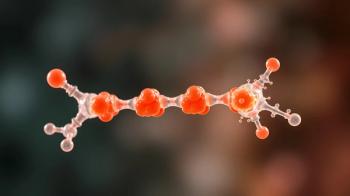
Treatment of Precancerous Growths Decrease Progression to Anal Cancer in Patients With HIV
Investigators found that treatment of high-grade squamous intraepithelial lesions in patients with HIV reduced anal cancer incidence by approximately 57%.
Treating high-grade squamous intraepithelial lesions (HSILs), which can be precancerous anal growths, in
Similar to cervical cancer, anal cancer is caused by human papillomavirus (HPV), which can lead to precancerous HSILs that can eventually progress to cancer.1
"Treatment of high-grade cervical lesions is known to prevent cervical cancer in women," Michael Hagensee, MD, PhD, a professor of Infectious Diseases and Microbiology at the Louisiana State University New Orleans, said in a statement. "Anal cancer has Increased 25-fold in persons living with HIV, and the [anal Cancer-HSIL Outcomes Research] ANCHOR study is based on the same approach."1
The trial included 4446 individuals, 35 years of age or older, who had HIV and high-grade anal lesions on biopsy at 25 sites across the United States.
All of the individuals underwent high-resolution anoscopy at least every 6 months. A biopsy was performed for suspected ongoing HSILs in the treatment group, annually for the active-monitoring group, or any time there was a concern for cancer.2
The primary outcome of the study was progression to anal cancer.2 In the study, individuals were randomly assigned to a treatment group or a group of individuals who were closely observed, which is the current standard of care.2
In the treatment group, individuals underwent procedures to remove the lesions, including office-based ablative procedures, either ablation or excision under anesthesia, or under the administration of topical fluorouracil or imiquimod.1
Investigators found that treatment reduced anal cancer by about 57%, with a median follow-up of 25.8 months.2 There were 9 cases diagnosed in the treatment arm compared to 21 cases in the standard of care arm.2
"Our results support the use of screening and treatment for anal HSIL as the standard of care for [individuals] living with HIV," Hagensee said in the statement. "Next steps include determining the best way to screen [individuals] living with HIV for detecting high-grade lesions, when should this screening start and at what intervals, and what is the best way to treat someone with high-grade anal lesions."1
The study was supported by the National Cancer Institute of the National Institutes of Health.1
The CDC cites that anal cancer is rare among the general population, with about 1 to 2 cases per every 100,000 individuals every year, but substantially higher among specific populations, including men with an HIV infection at 40 to 60 cases per every 100,000 individuals every year and women with an HIV infection at 20 to 30 cases per every 100,000 individuals every year.3
References
1. Treating precancerous growths in people with HIV reduces anal cancer by more than half, study finds. News release. Science Daily. July 14, 2022. Accessed July 25, 2022. https://www.sciencedaily.com/releases/2022/07/220714165814.htm
2. Palefsky JM, Lee JY, Jay N, Goldstone SE, et al. Treatment of anal high-grade squamous intraepithelial lesions to prevent anal cancer. New England Journal of Medicine. July 2022;386:2273-2282. doi: 10.1056/NEJMoa2201048
3. Centers for Disease Control and Prevention. Sexually Transmitted Infection Treatment Guidelines, 2021. HPV-Associated Cancers and Precancers. Updated July 22, 2021. Accessed July 25, 2022. https://www.cdc.gov/std/treatment-guidelines/hpv-cancer.htm
Newsletter
Stay informed on drug updates, treatment guidelines, and pharmacy practice trends—subscribe to Pharmacy Times for weekly clinical insights.














































































































































































































